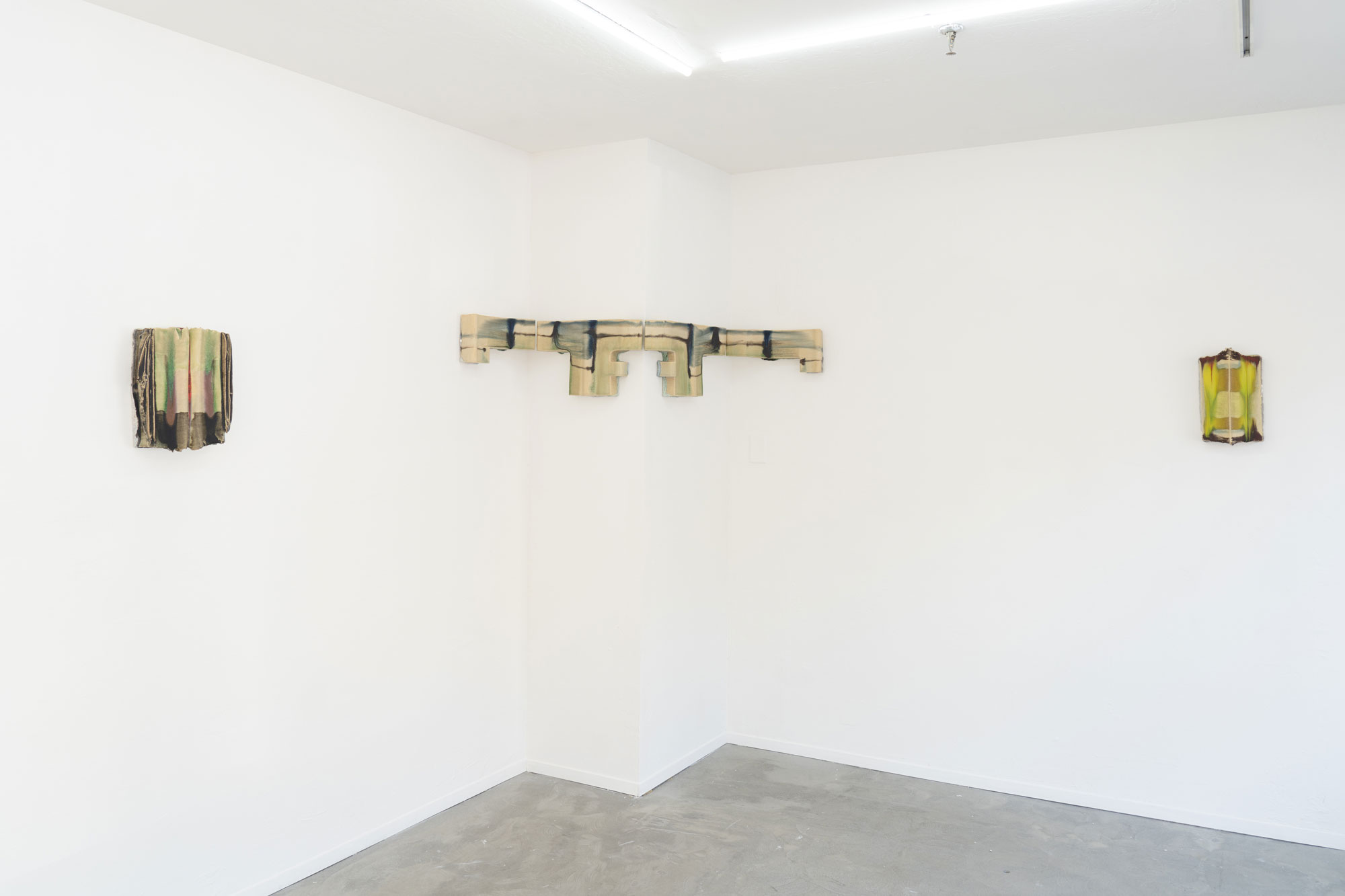Shows at the Mission District gallery House of Seiko are usually spare by necessity: the storefront space is a mere 350 square feet. This is absolutely a good thing. A spare show gives art room to breathe. It makes small details pop. Viewers linger to chat and soak it all in. (The one downside to a spare show is that it looks completely underwhelming in photographs, but that’s neither the fault of the art nor its arrangement.)
In House of Seiko’s latest exhibition, Cross Lypka’s Tarantula, just four ceramic works hang on the gallery’s white walls. Created through a process of exquisite-corpse-like collaboration by Oakland artists Tyler Cross and Kyle Lypka, the sculptures are airy paintings made chunky, an alchemical fusion of delicacy and solidity.
It starts with a drawing, sometimes just the outline of a shape, often made by Cross. Lypka selects from these glyphs and hand-builds a three-dimensional object from clay. Cross applies the glaze, using a mixture of glass and other additives that run and pool according to the vicissitudes of gravity and heat. The pieces are fired in a bed of sand that fuses with the overflowing molten mixture, creating an encrusted skirt on an otherwise smooth finish. Then, the artists apply surface treatments and sealants.

Up close, their undulating ceramic objects — in this show, all wall-hanging works — are covered in fine networks of crackle. Some glazes render colors as if they lie at the bottom of clear pools. Others resemble the watercolor-esque stain paintings of Helen Frankenthaler (and her copyist, Morris Louis).
While Cross Lypka’s previous exhibitions have included more vessel-like sculptures, Tarantula resembles a set of architectural fragments that could have been pried off a rotting Victorian down the street. There are nods to cornices and crown molding. These are mysterious ornaments removed from any set purpose and showing signs of elemental wear.



